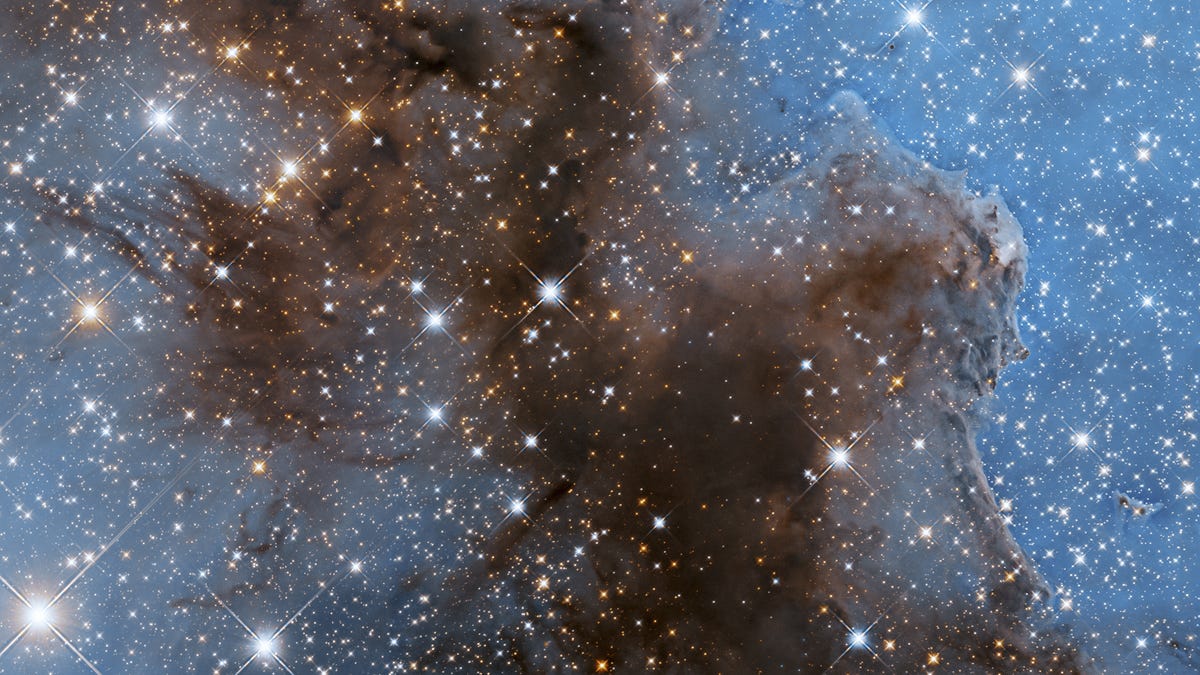NASA Hubble Telescope Delivers Dazzling New View of Star-Studded Carina Nebula
Carina is one of Hubble's favorite targets, and you can see why.
The Carina Nebula is a supermodel among space objects. Both the Hubble Space Telescope and the James Webb Space Telescope have snapped its portrait, and now Hubble has gone back for a fresh look at the cosmic beauty. NASA released the sparkling view on Wednesday.
Carina, known more formally as NGC 3372, is an emissions nebula, a glowing mass of gas and dust where stars are born and where stars die.
The Carina Nebula is huge. This shows where in the nebula Hubble focused to capture the new image.
Stars are responsible for the nebula's ghost-like appearance. "As stars form and produce ultraviolet radiation, their stellar winds disperse the gas and dust around them, sometimes forming dark, dusty cloaks and sometimes creating empty patches for the stars to become clearly visible," NASA said in a statement.
The Carina Nebula is enormous, stretching across 300 light-years of space. The new Hubble view captures a detailed look at just a small portion of the nebula. NASA shared a graphic showing where the close-up is located in the larger structure.
The entire nebula is a looker, but dialing into the details of one small section offers a profound experience. The sheer number of stars in just this area is enough to take my breath away.
It's not just space telescopes that can see Carina. Earth dwellers in the Southern Hemisphere can also spot it, no equipment needed. Look for Eta Carinae, a bright star system in the nebula. A stargazing app can point you in the right direction.
Hubble has spent over three decades studying the universe. That it continues to deliver images like this one is a testament to the equipment and the teams that have kept it ticking. There may be more Hubble views of the Carina Nebula yet to come.


